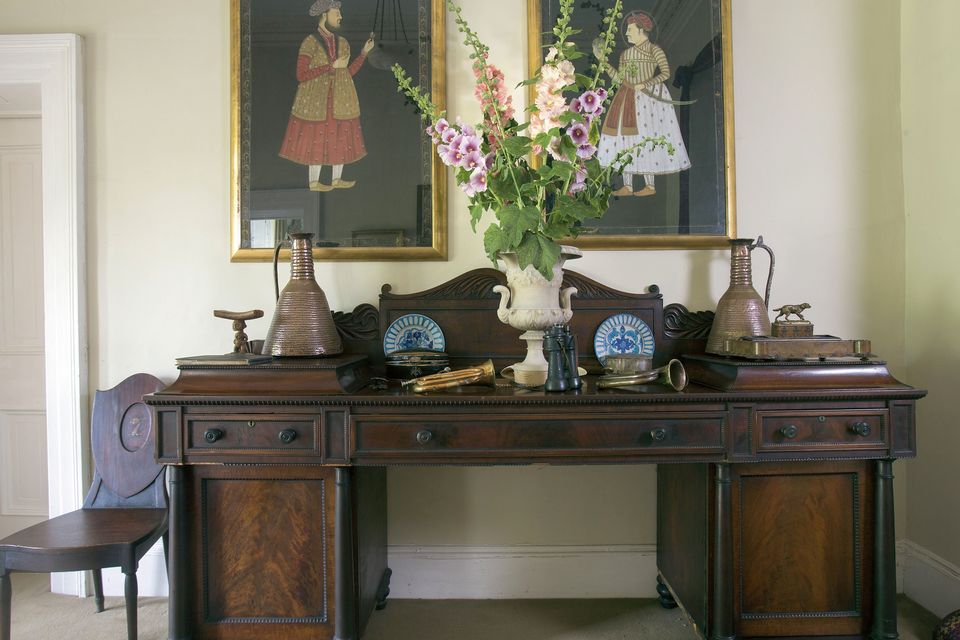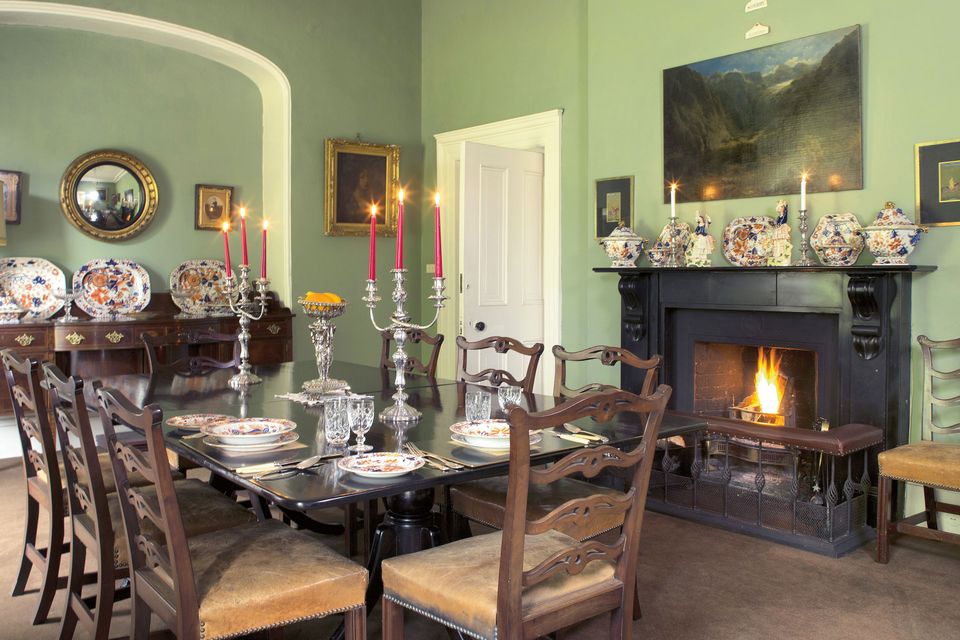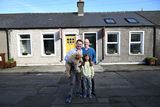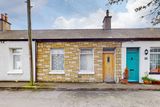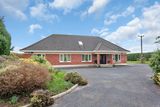The art of living at Meath's historic Rosnaree house
Initially overwhelmed by the enormity of running her late husband’s family home, Rossnaree, Aisling Law now finds her passion for art energises her, and the house, too. Edited by Mary O’Sullivan. Photography by Tony Gavin.
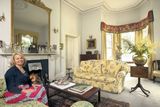
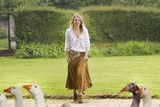
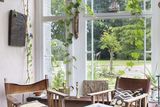
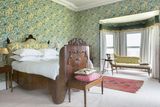

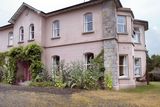

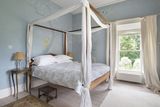
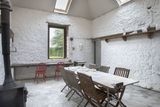
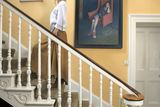
We all have our views on the Anglo-Irish and the Big House, but it can’t be denied that they built wonderful buildings in stunning locations. It’s also a fact that these houses are pretty hard to maintain, so in most cases they’ve been overhauled to accommodate paying guests, giving the hoi polloi a chance to enjoy a few days of above-stairs life.
It’s an additional selling point if the occupants are colourful characters, and colourful they are — there’s Uncle Jack Leslie, the dancing nonagenarian of Castle Leslie in Monaghan, and the Archpriestess of the Fellowship of Isis, Lady Olivia of Huntington Castle in Carlow, who died last year.
However, only the stately Rossnaree in County Meath can boast an owner who was once a circus performer — a fire-eater, to be precise. “It was in 1979 — I met these circus guys in a pub in Rathdrum. I’d always wanted to work in a circus, and they said ‘OK, you’ve got the job’. They called me ‘Flamina from the USA’,” Aisling Hall, the delightful chatelaine of Rossnaree explains with a laugh, adding, “It’s not actually very difficult to do, although if there’s a puff of wind it could burn your lips”.
In a way, it’s quite a fitting occupation for Aisling to have picked, albeit briefly — she only lasted a summer. She is, after all, the great-granddaughter of the legendary Maud Gonne, muse of WB Yeats, of whom Yeats wrote: “was there another Troy for her to burn?”
Rossnaree — it means ‘headland of the kings’ — is set in stunning grounds overlooking one of Ireland’s most valuable tourist attractions, Newgrange, and is now Aisling’s home. Though it’s large, rambling and costly to run, she is determined to make it pay its way.
Like many other great-house owners Aisling takes in guests — usually people planning to visit Newgrange, or those attending weddings in the area. She also does lovely home-made afternoon teas. Her proudest achievement, however, is the Rossnaree Art School. She runs extremely good art courses.
She can do it all with an affectionate detachment; she wasn’t born into the house. It was her husband Robert’s family — “Anglo-Irish, hunting, Church of Ireland, military,” says Aisling — who occupied the house for over 100 years and she’s committed to keeping it going partly for their daughter, Yseult, and partly to honour Robert’s memory. Sadly, he died 10 years ago.
Aisling’s family were illustrious too, but in a completely different way.
Her grandparents were the writer Francis Stuart, and Maud Gonne’s daughter, Yseult Gonne; while her parents were Ian Stuart and German-born Imogen Stuart, both sculptors. Her father didn’t speak much about his grandmother, Maud Gonne, and Aisling remembers his reaction when one day she told him that a teacher had made a big deal about the relationship in school. “‘Never live off that,’ he said. He never talked about his family background — he was sick of it,” she explains.
Growing up in Wicklow, Aisling’s own immediate family’s way of life was quite bohemian. “Of course, growing up with it, I thought it was all quite normal; as a child, you accept everything. Both my parents would work all day — to see them, you had to go into the studio, there were artists coming and going in our house all the time. My father was amazing — he had a great sense of style. For example, we never had curtains because he just hated them,” she says, trying to explain what ‘bohemian’ meant in their case.
“I had a beautiful childhood; I wouldn’t replace it. When it came to careers, it was up to you to do it,” Aisling sums up, adding with a hearty laugh, “That’s my excuse, anyway.”
Aisling, who is one of six daughters — three from Ian’s relationship with her mother and three from his subsequent relationship with Anna Stuart — says she never actually did an exam in her life, and left school in Ireland at 15. “My parents were living in Germany, and I went to school for a while in Berlin. It was a free school — I took full advantage of the freedom and ended up doing nothing. It was run by a student body and the students said I wasn’t suitable. My father just said, ‘maybe school doesn’t suit you!’”
Aisling really wanted to study art and, even though her father thought all art colleges were nonsense and a waste of time, he lied about her age and got her into a German art school, where she did metalwork, ceramics and life drawing. She says she learned a huge amount; as a result she got into Dun Laoghaire School of Art — now IADT — on the portfolio she had prepared in Germany.
“You were supposed to have your Leaving Cert, but my father told me to go in with my portfolio and say I forgot to bring my Leaving Cert with me,” she says. She did, and it worked.
She graduated from Dun Laoghaire, did a post grad in Germany and fully intended to become a professional artist — but she got sidetracked. “I was always very artistic and there is nothing I love more than painting, but I got distracted. I followed my passions,” she says.
These included a bit of film work, mask work in Paris, and of course, the fire-eating job, for which she had some experience, as she had learned how to do it for a performance-art piece while studying in Germany. “The circus people said, ‘we’ll give you a caravan and a wage’ and that sounded fantastic. We agreed to meet in Kerry. I was a few days late and I was going around asking, ‘have you seen the circus?’ Someone would say ‘oh, they were here two days ago’. It wasn’t like there were mobile phones. I eventually found them in Milltown,” she recalls.
“I’d never worked in a circus; I had no idea how to perform. But they just told me to go on for the matinee.” She was terrified, but got through the performance, albeit rather shakily. It didn’t turn out to be a great job — there was no salary and she didn’t get a caravan, either, just the back of a van with a filthy old mattress. “There was a manky old lion that was dragged around and I used to have to go to the butcher to get a cow’s head for him. The weight of the cow’s head,” she recalls with feeling, adding nonetheless that the two months with the circus was a huge experience.
Other adventures followed; she fell in love and gave birth to her son, Emile — who is now a documentary film-maker — and the little family went to live and work on Lambay Island. After a year there, she split from her partner and went to live in Sandycove near her mother — her parents had separated when she was a teenager.
Soon after, in 1991, she met Robert through the same friend, Roderic O’Connor, who had introduced her to the circus people. “I was gathering material for a documentary about Francis Stuart and I was trying to get money to film an event where Francis was speaking. I asked Roderic if he knew where I would get money. Roderic said, ‘I think I might I know someone.’ The someone was Robert. Roderic knew he had just won some money on a horse,” Aisling says.
“We met in the Shelbourne for afternoon tea — can you imagine? Robert walked in. I never had a brother, but he looked like my brother. I was meeting the person of my life. I had this flash of recognition of this person; total recognition, even though I’d never seen this face before, maybe in another life.”
The relationship took off pretty quickly. Robert was on the phone to her morning, noon and night, pursuing her relentlessly, and he proposed after about two months. Aisling was fascinated by him, too. He was a barrister and worked in London, he was intelligent and witty and, while he wouldn’t deny the
Anglo-Irish aspect of his heritage, he had a huge sense of Ireland too. “When he brought me to Rossnaree, he brought me here in the dark, by the back entrance — he didn’t want me seeing the front of the house, this big manor house. Which was lovely, I thought,” Aisling says. “I might have behaved in a different way — not naturally.”
It wasn’t all plain sailing; initially Robert’s mother, Judy, a very formidable lady, wasn’t too impressed with Aisling. “The first thing she said was, ‘you’re not a Catholic, are you?’ and ‘you’re half-German’. She used to say I chased him, and I didn’t,” Aisling protests with a laugh. Aisling laughs a lot. Tragedy — as well as Robert’s death, her sister Siobhan died in a car accident in her early 30s — hasn’t diminished her sense of humour.
Eventually, Aisling and her mother-in-law became friends and, after the wedding in Paris, Judy even ended up spending part of their honeymoon with them. The couple then went to live in London, where Robert practised at the bar. Early on in the marriage they went on holiday to Uganda and loved it, so Robert decided to get a job there. Their daughter, Yseult, was three months old and Emile, Aisling’s son, was of secondary-school age when they left for Uganda. They stayed in total for eight years, settling in Kampala. “We lived in a cottage on Lake Victoria, we had breakfast on the veranda overlooking the lake, we had geese, Yseult grew up there — it was wonderful,” Aisling says.
During this time, Robert worked as an adviser to the minister of constitutional affairs there and Aisling got work as an interior designer, doing up safari lodges. It was a challenge which was to stand to her when she later returned and renovated Rossnaree. “You couldn’t buy a lampshade there, you had to get material woven; there was no furniture, I had to find craftsmen, I had to root around in villages, using everything local,” she explains.
They loved living in Kampala but, in many ways, they were only putting off the inevitable; they had to return to look after Rossnaree. “Robert’s mother kept writing: when are you coming back? She was like a warden, keeping the place going for Robert. One day she sent us the key and a letter, saying, ‘you can let it fall down, if you like. I’m moving out’.”
So back they came. Robert continued to work as a barrister and Aisling started doing bed and breakfast, but first she had to do something with the house; Robert’s mother had shut it all up, confining herself to a few rooms.
“I had no desire to run a manor house, but I had to,” she says. “I felt it was stagnant, but I was nervous about doing anything so I got a shaman. He said, ‘make it the way you like it’ so I did move things; that was a great freeing feeling. And I got a big container of stuff from Africa to remind me of my life there”.
Sadly, in the middle of the renovations, in 2004, Robert died and Aisling was devastated. She went to live in Florence to study art for a year but again, it was inevitable she had to come back. “It was tough,” she says. “Sometimes when you go through tragedy, you need to keep going. I’m not one to sit and cry — I’ll push myself on. I’m not going to sink into sadness. Otherwise, how will I get out of it?” she says. “I kind of felt I was doing it for him; I felt I was fulfilling his dream in lots of ways.”
Despite it initially being Robert’s dream, she has done it her way. She set about redecorating the house, making the best of what was there and keeping in situ many of the family heirlooms, including portraits and photographs — there’s one of the Duchess of Gloucester, as Robert’s father had been her equerry.
Aisling has added her own touches from her travels. She also decided to put a lot of emphasis on her own great passion for art and start an art school, which she’s been running since 2007. When weather permits, the classes are held outdoors on the amazing grounds, but, in the main, they take place in the wonderful, light-filled studios, which were once stables.
“The studios are specially designed with north light, as they are in the academies of Florence,” Aisling says. “It’s a multi-disciplinary, three-day course which includes sculpture, drawing, landscape, some figurative painting and portraiture.
“My nephew, Sam Horler, a brilliant artist, comes and teaches here, while the Hungarian artist, Istvan Laszlo, teaches sculpture. We do clay modelling, doing nose, eyes, mouth — the basics. We’re training the eye and the hand. The sense of observation is heightened. Our course is unique,” Aisling says passionately.
She goes on to explain: “I set up the school as a reaction to the lack of classical training in drawing and sculpture in art schools. I feel that you cannot do contemporary art unless you have an understanding of history. Both Picasso and Van Gogh used the same methods in drawing that we teach here at the Rossnaree Summer School.”
Aisling oversees the courses, but if her own evocative paintings, which are all over her kitchen, are any indication, she could do the tuition herself.
Despite all the art courses she’s done, she’s never had an exhibition — perhaps with two such high-profile artist parents, she found it hard to forge her own career in the same milieu? Aisling doesn’t deny that, but that could alter. “I feel a change in my life coming on, I don’t know what, but it could be exciting,” she says.
For such an intrepid spirit, it will probably be another great adventure.
The next Rossnaree Summer School art courses will take place from August 15-17, August 29-31 and September 19-21.
For more details, see www.rossnaree.ie
Join the Irish Independent WhatsApp channel
Stay up to date with all the latest news




